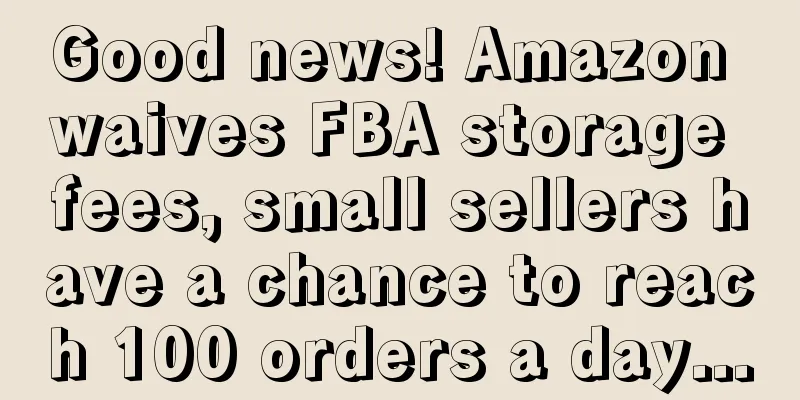Amazon’s differentiated product selection is misunderstood by most people

|
In the fiercely competitive e-commerce world of Amazon, product selection is undoubtedly one of the key factors that determine success or failure. And "differentiated product selection" is the goal pursued by many sellers, but only a few can truly achieve effective differentiation. Today, we will take a deep look at the differentiation strategy in Amazon's product selection and uncover the truth behind it. Traditional Amazon product selection thinking often falls into the quagmire of superficial differentiation. Many sellers believe that simple adjustments to the appearance of products, such as changing the color, packaging, or combination sets, can create distinctive products. However, this approach is often just "changing the soup but not the medicine" and fails to touch the core needs of users. Take a multifunctional kitchen vegetable cutter as an example. After seeing similar products selling well, a seller added a blade combination and a portable storage box to launch the so-called "differentiated product". However, the result was not satisfactory, and the product conversion rate was far lower than expected. This is because this superficial stacking of functions did not solve the substantial pain points of users in the process of using the vegetable cutter, such as vegetable cutting efficiency and cleaning difficulty. In Amazon's search results, we can see many similar products. It is difficult to stand out from many competitors by simply changing the appearance or simple functions. True differentiated product selection should be based on a deep understanding of user needs. By deeply studying user comments and feedback, we can discover user pain points and unmet needs hidden beneath the surface, thus providing a strong basis for product development. In the pet products market, analysis of user reviews revealed that older pet owners have major complaints about the ease of use of traditional cleaning tools. A keen seller seized this opportunity and designed an ergonomic cleaning tool series specifically for pet owners over 55 years old. After the product was launched, the conversion rate was as high as 23% and received a large number of positive reviews. This fully proves that accurately positioning the target user group, deeply understanding their needs, and developing products that truly solve the problem are the key to successful differentiated product selection. 1. Take the power strip as an exampleTake a power strip that seems to be clearly differentiated as an example. It has many sockets, long cables, and USB ports. However, we can still use the Shulex VOC AI tool to explore more potential needs. 2. VOC AI Comment Analysis Steps
Data shows that products that precisely meet the needs of specific user groups have an average profit margin that is 35% higher than ordinary products. This once again highlights the importance of in-depth user insights. When selecting products on Amazon, sellers are advised to follow the following steps:
In short, the differentiation of Amazon product selection should not only stay on the surface, but also go deep into the hearts of users and accurately grasp their needs. Only in this way can we stand out in the fierce market competition and achieve sales growth and profit improvement. I hope the above content can provide a useful reference for Amazon sellers. I wish you all a smooth product selection! |
<<: Debtors should be cautious when entering cross-border e-commerce: Don’t take traps as pie
>>: Cross-border e-commerce Amazon startup: Stay away from junk tracks
Recommend
Which seasonal products have the most potential to sell on Amazon?
As we all know, there are all kinds of products fo...
What is Camelcamelcamel? Camelcamelcamel Review
Camelcamelcamel is a free Amazon price tracker tha...
Click-through rate soars! Amazon's new brand advertising policy
Amazon announced: After May 31st No ads using cust...
Beware! These popular products have patents, sellers should check...
1. ORAL IRRIGATOR Overseas consumers generally att...
What is Asendia? Asendia Review
Asendia was founded in July 2012 as a joint ventur...
Sellers, please be aware! Amazon strictly reviews refurbished products, so check out the tips to avoid spoilers now!
text This year, Amazon's crackdown has become...
US back-to-school season online shopping statistics released! Amazon penetration rate reaches 67%
It is learned that Digital Commerce 360 conducte...
What is K5 Warehousing Software? K5 Warehousing Software Review
K5 Warehousing Software is a product of Shenzhen Y...
What is Juxiang Cross-border Fingerprint Browser? Juxiang Cross-border Fingerprint Browser Review
The Juxiang cross-border fingerprint browser is an...
Sales soared 10,000%! Ukrainian-related products are selling like hot cakes on Amazon US
It is learned that after the outbreak of the war b...
Amazon's new policy has been introduced, VCs can no longer change prices? !
Cross-border Business School Information and skil...
What is EasyParcel? EasyParcel Review
EasyParcel is a logistics service aggregation plat...
What is Submarino? Submarino Review
Submarino is a Brazilian online retail website tha...
What is 55haitao - What is 55haitao.com? ? 55haitao - What is 55haitao.com? Review
55haitao.com is a professional overseas shopping w...
The review request is dead! Just now, Amazon has a new policy
During the peak season at the end of the year, wh...









